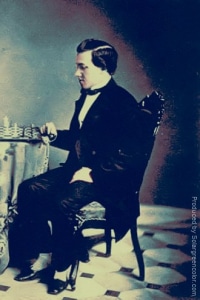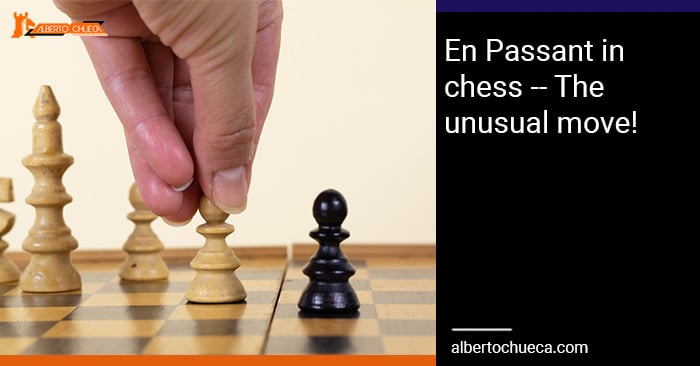When we learn how the chess pieces move, most of the piece movement is pretty straightforward. Each piece has certain rules assigned to them. However, there are a few special rules/exceptions that players should know about because they can come up. Castling is one of them. Another is En Passant. That is a special rule that applies to the pawn. It is so confusing, especially to kids. We will be discussing exactly what that rule is. But before we do that, let's give a general refresher on the rules about the chess pawn.

Table of Contents
How does the pawn move in chess? A review
In case you don't remember 100%, the pawn has the option to move one or two steps on its first turn, it can only move one step after it has moved. The pawn captures diagonally, one square. That rule will be key for the purposes of learning this unique move.
We see a basic example above. White played pawn from e2 to e4, taking advantage of his right to move two squares forward. Black did the same, d7 to d5. White exercised his option to capture diagonally, doing so from e4 to d5.
We must also remember pawn promotion. This is when a pawn reaches the other side of the chessboard (8th rank for White, 1st rank for Black), and has the option to turn into a Queen, Rook, Bishop, or Knight.
What is En Passant in chess?
We've come to the climax of the post, what exactly is en passant in chess? The precise ruling is when your opponent moves their pawn two squares, and lands right next (to the left or right) to your pawn, you are able to capture forwards in a diagonal manner towards the pawn and take it out… and, you can only En Passant on your first try! OK, that is extremely complicated, especially for a beginner who is learning chess! Let's break it down with an example! :-)
OK, this is a funny French Defense with 1. e4, e6 2. e5?!, d5. Note how black just placed the pawn from d7 to d5. Let's look at the diagram again.
We see above that White is able to capture en passant being approved of the following prerequisites:
- The d-pawn moved two squares
- Landed RIGHT NEXT to our pawn
- We can do it on this turn only
So we can make the capture, as highlighted in the diagram above.
Some misconceptions of how to En Passant
With the rules of this move being extremely complicated, we will analyze a few example positions, from hypothetical games, where it looks like En Passant is legal, but one nuisance of the rule compared to the position change the legality of the special pawn move.
In the position above, White can place the pawn from a5 to a6 safely without being captured by the rules of En Passant. Why might that be? The difference is that in the situation above, the pawn moved one square, while in every en passant example, the pawn moves two squares. The following is another misconception.
The position above is just another silly example. White can play pawn from g2-g4, and the pawn on f3 cannot capture en passant. Of course, for a real chess lesson, g4 would be a bad move, however, we are simply trying to highlight en passant and when you can do it and when you cannot.
In the situation above, the pawn did not land right next to the other pawn! The pawn on f3 and g4 are not next to each other! In order for En Passant to happen, the pawns must be side by side.
A real-life example from Paul Morphy
Now that we are done talking about when en passant cannot happen, let's talk about when a famous player was able to DO en passant legally.

In the position above, Black played pawn from f7 to f5. We see that the pawn on e5 can capture, as all of the requirements are met in order for an en passant capture to happen. Paul Morphy captures en passant, and Black resigns, making that the final move of the game.
White is winning because if Kd8, fxg7+ is game over, the second Queen coming. If Kf7, Bc4+ is lights out. If Be7, Qg6+ initiates taking the Bishop with the pawn next move with check, Black is crumbling apart. The full game can be reviewed here: https://www.chessgames.com/perl/chessgame?gid=1238203
The hardest checkmate in one puzzle
You are probably thinking to yourself, “wait, why are we talking about checkmate in one in an article on en passant?”…
This will be a good closing puzzle for you. White to play, and find the checkmate in one move! Hint, maybe you have an en passant available ;)






